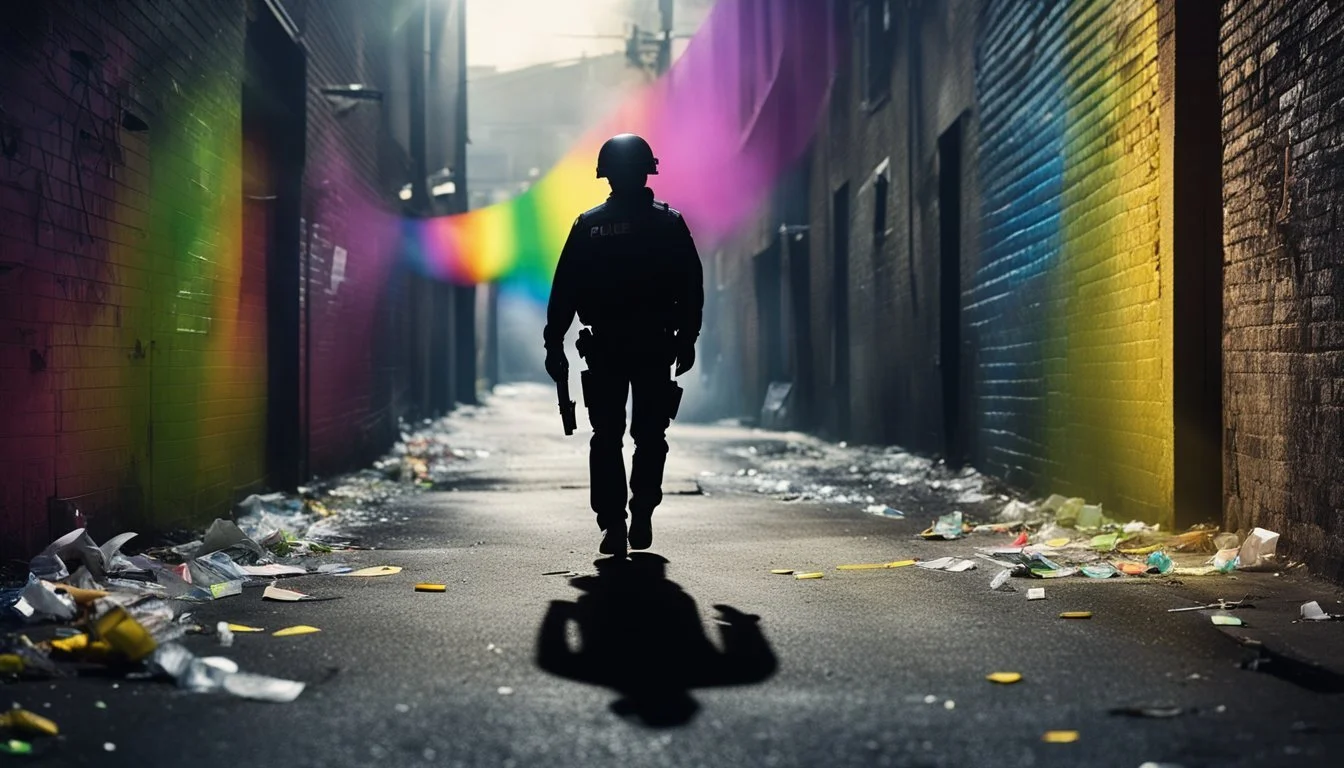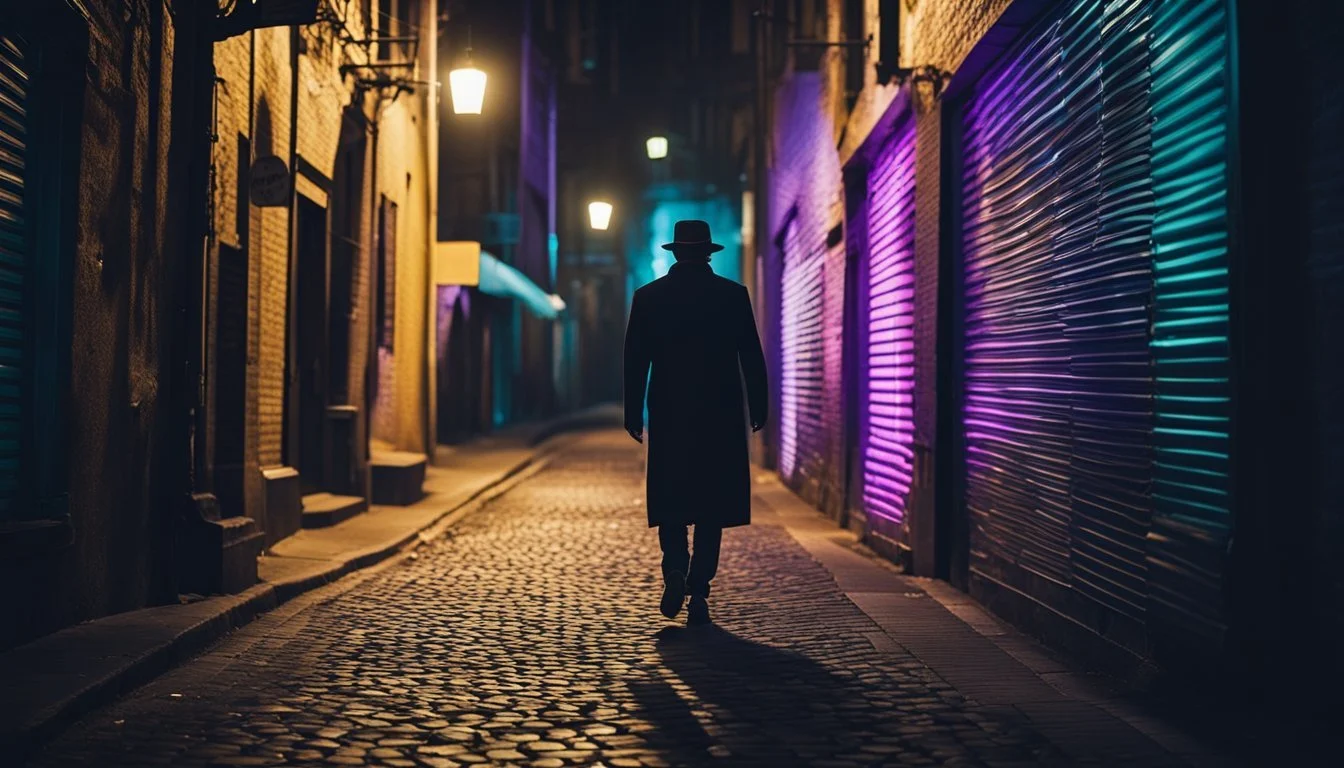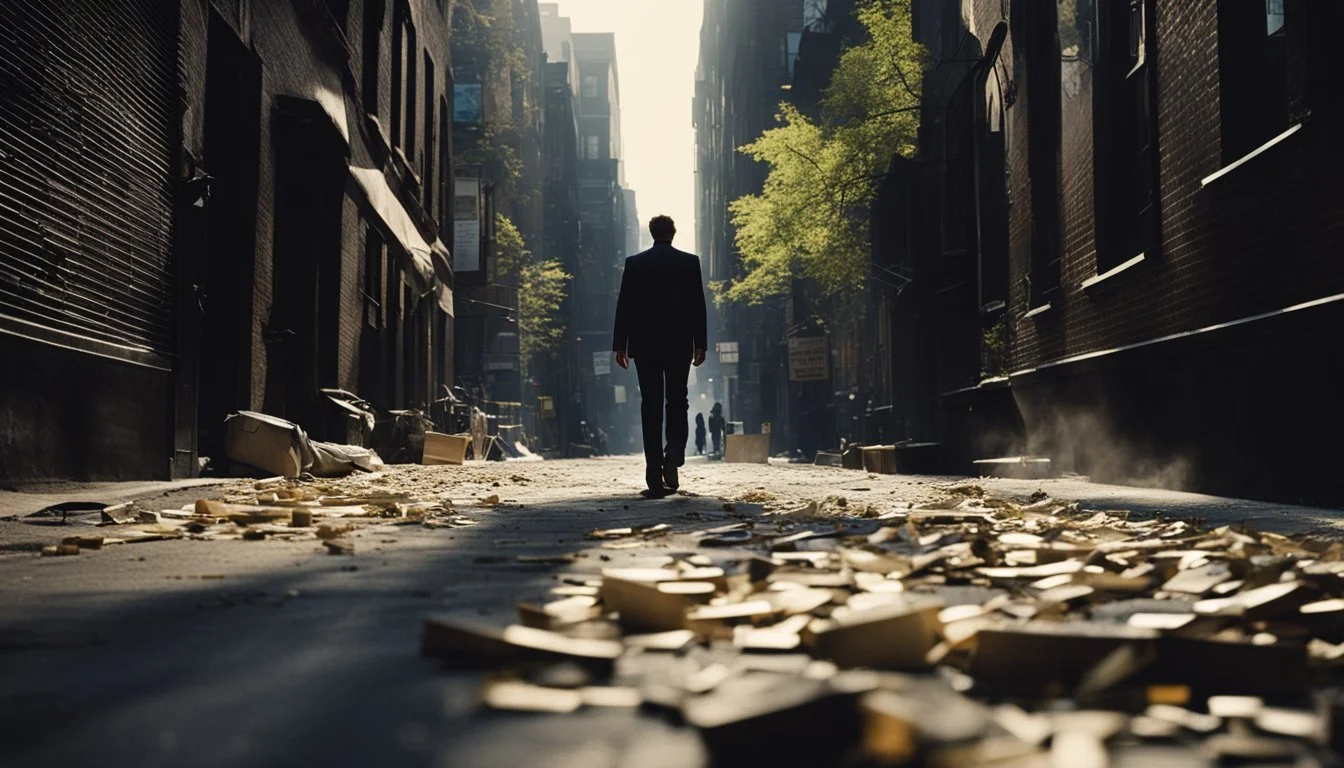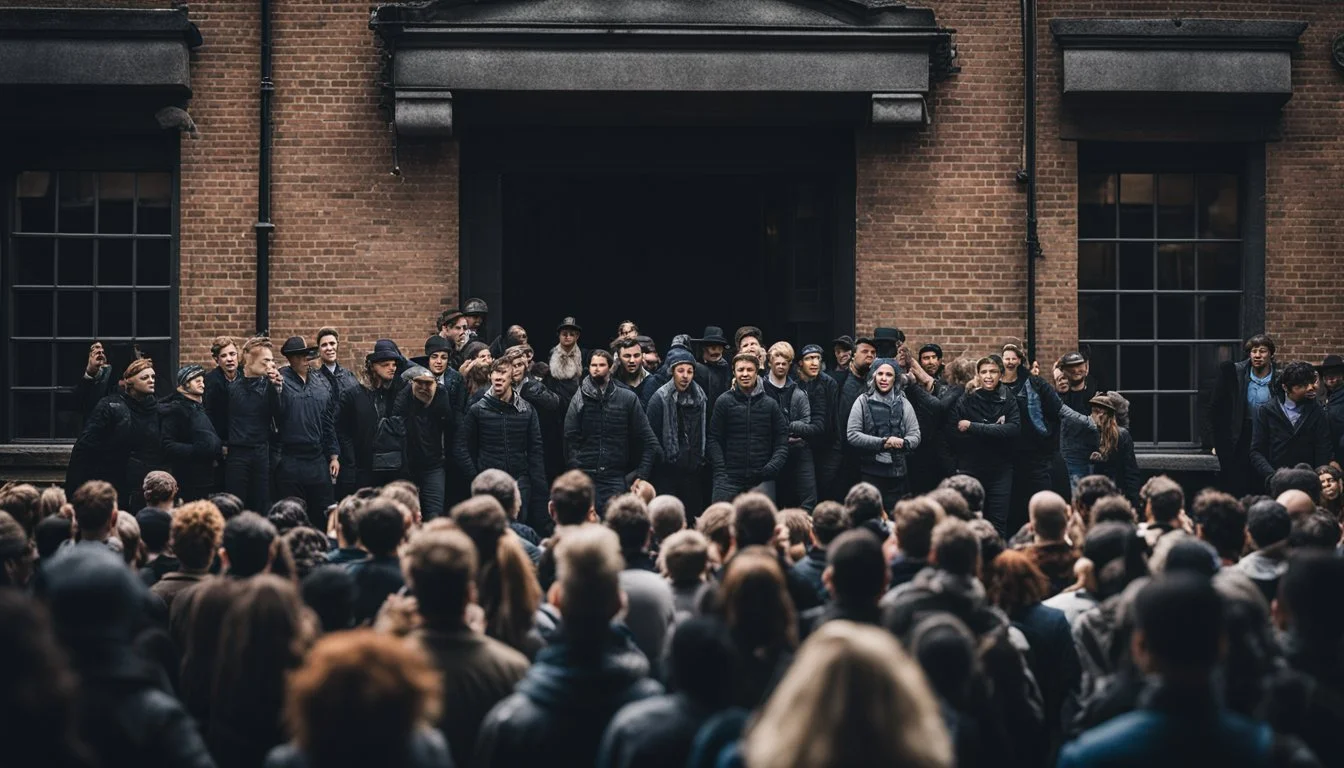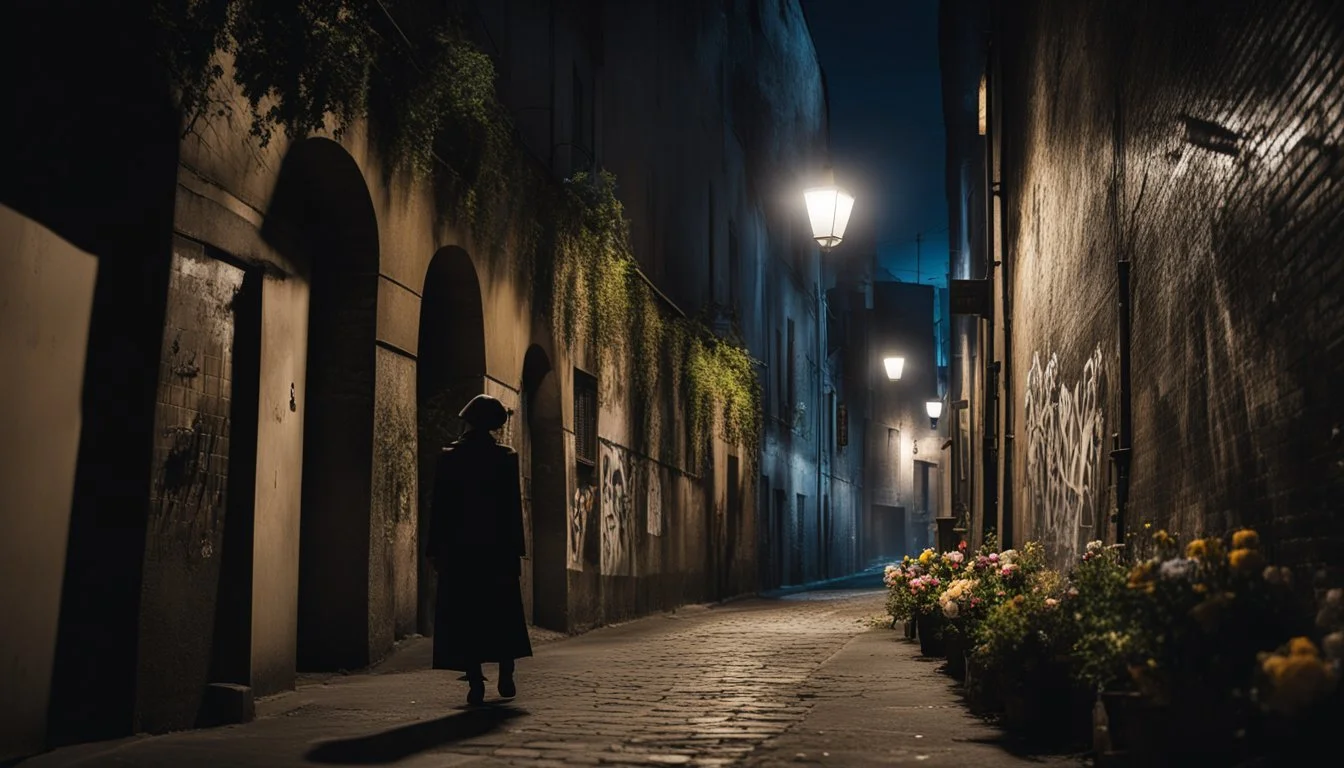7 True Crime Documentaries About Murder in the LGBTQ+ Community
Essential Viewing
True crime documentaries offer a compelling lens through which to explore real-world events, particularly those involving marginalized communities. The LGBTQ+ community has faced grave injustices, and understanding these harrowing stories through documentary filmmaking provides a powerful means to acknowledge and address such struggles.
These documentaries shed light on crimes that have profoundly affected the LGBTQ+ community, offering viewers insight into both the victims' lives and the broader societal issues at play. These films not only document the crimes but also serve as important cultural touchstones, fostering awareness and, ultimately, change.
1) The Death and Life of Marsha P. Johnson (2017)
The Death and Life of Marsha P. Johnson is a Netflix documentary directed by David France. It delves into the mysterious 1992 death of Marsha P. Johnson, a black gay rights activist and Stonewall veteran. Activist Victoria Cruz is at the heart of the investigation, exploring Johnson's life and unsolved case.
The film uses archival interviews with Johnson and new interviews with Johnson's family, friends, and fellow activists. This in-depth approach sheds light on Marsha P. Johnson as both a person and an icon in the LGBTQ+ community.
The documentary also highlights the broader societal issues and challenges faced by LGBTQ+ individuals, particularly trans women of color. By investigating Marsha P. Johnson's life and activism, viewers gain insight into both historical and contemporary struggles for LGBTQ+ rights.
For more information on this film, visit IMDb or Wikipedia.
2) Paris Is Burning (1990)
"Paris Is Burning" (1990) is a landmark documentary directed by Jennie Livingston. It explores the vibrant ball culture of Black and Latinx queer communities in New York City during the late 1980s.
The film provides an intimate look into the lives of transgender women and gay men who partake in these ballroom events, showcasing their creativity and resilience.
"Paris Is Burning" highlights the unique fashion, dance, and lingo that emerged from the ball scene. It also addresses issues of race, class, gender, and sexuality within the LGBTQ+ community.
The documentary brought mainstream awareness to the struggles and triumphs of its subjects, many of whom faced poverty, discrimination, and violence.
Key personalities such as Dorian Corey, Pepper LaBeija, and Venus Xtravaganza offer compelling narratives that enhance the documentary’s impact.
The murder of Venus Xtravaganza, a prominent figure in the film, remains a tragic and unresolved aspect that underscores the prevailing dangers faced by transgender women of color.
"Paris Is Burning" remains a cornerstone for understanding the roots of contemporary LGBTQ+ culture and its ongoing struggles.
For more information, see Paris Is Burning on Wikipedia.
3) The Brandon Teena Story (1998)
The Brandon Teena Story is a poignant documentary directed by Susan Muska and Gréta Olafsdóttir. It examines the tragic events surrounding the life and death of Brandon Teena, a transgender man who was brutally murdered in Humboldt, Nebraska, in 1993.
Brandon Teena's story gained widespread attention due to the nature of the hate crime that led to his death. Targeted for his gender identity, Teena faced violent assault and ultimately lost his life, highlighting the extreme dangers faced by transgender individuals.
The documentary outlines not only the details of the crime but also provides insight into Teena’s life and the people who were close to him. It serves as a crucial reminder of the real-life consequences of discrimination and hatred.
This film also inspired the Hollywood feature "Boys Don't Cry," which brought further attention to Teena's story and the issues faced by the LGBTQ+ community.
For more information about the documentary, visit IMDb.
4) A Murder in Greenwich Village
"A Murder in Greenwich" (2002) explores the tragic case of Martha Moxley, a 15-year-old girl who was brutally murdered in 1975. The film provides an in-depth look at her killing in the affluent area of Greenwich, Connecticut. The case remained unsolved for decades, capturing public and media attention.
Martha Moxley was last seen at the Skakel family home, directly across the street from her own. Michael Skakel, a member of the prominent Skakel family, was eventually convicted of her murder in 2002. The documentary delves into the investigation, re-examining evidence and witness testimonies.
The film doesn't shy away from highlighting the complexities and challenges faced by law enforcement in solving the case. It offers insights into the socio-economic dynamics of the community and their influence on the investigation. The investigation's twists and turns are detailed, providing viewers with a comprehensive understanding of the case.
Further information can be found here.
5) Killing Patient Zero (2019)
"Killing Patient Zero" is a Canadian documentary directed by Laurie Lynd. It focuses on Gaëtan Dugas, a Canadian flight attendant who became one of the earliest diagnosed HIV/AIDS patients in North America. Despite being wrongfully identified as "Patient Zero," Dugas played a crucial role in early understanding of the disease by providing blood samples and identifying his former partners.
The film illuminates the stigma and blame placed upon Dugas, who was demonized for his promiscuity. This narrative unfairly scapegoated him and diverted attention from the broader issues that allowed the epidemic to spread. It also highlights the prejudice and misinformation prevalent during the early years of the HIV/AIDS crisis.
Lynd's documentary seeks to correct these misconceptions and highlight the societal failings that contributed to the crisis. By humanizing Dugas and placing his story in a broader context, the film challenges the narrative that the epidemic was a consequence of individual actions rather than systemic neglect.
Further details about "Killing Patient Zero" can be found on IMDb.
6) Michael's Story: The True Crime of Fredrick
"Michael's Story: The True Crime of Fredrick" (2022) delves into the chilling murder of Michael Haim, a prominent LGBTQ+ activist. The film highlights the investigative journey that led to Fredrick "Fred" Jameson's arrest.
Michael Haim was well-known in his community for his advocacy work, striving for equal rights and justice.
Fredrick Jameson, a close acquaintance of Haim, was initially not a suspect. Over time, forensic evidence and witness testimony unveiled his involvement. The documentary reveals how personal relationships can sometimes mask darker motives.
Authorities faced numerous challenges in piecing together the evidence. The documentary also sheds light on the prejudices and biases that may have influenced initial investigations.
For more information on "Michael's Story," check out its IMDb page.
7) Stonewall Uprising: The Dark Side
"Stonewall Uprising: The Dark Side" (2010) shines a light on the police raid of the Stonewall Inn in Greenwich Village, NYC, on June 28, 1969. This raid sparked violent protests and demonstrations that lasted for days.
The documentary offers raw insights into the harsh realities faced by the LGBTQ+ community during this era. The aggressive police actions and the community's fierce resistance marked a pivotal moment in LGBTQ+ history.
Viewers learn about the overwhelming societal oppression and systematic harassment that led to the uprising. Through interviews and archival footage, the film uncovers the human stories behind the chaos, giving voice to those who experienced the brutality firsthand.
For more information, visit IMDB.
Historical Context of LGBTQ+ Representation in True Crime
LGBTQ+ representation in true crime media has evolved over time, reflecting broader societal changes. Early portrayals often mirrored societal biases, while modern portrayals strive for more accurate and nuanced depictions.
The Evolution of True Crime Media
True crime has long fascinated the public. Early true crime stories in newspapers and magazines often sensationalized crimes for shock value. As media evolved, so did the true crime genre, with radio shows, novels, and TV programs shaping the narrative.
In recent decades, the rise of documentaries and digital platforms expanded the reach of true crime. Documentaries began to focus not just on the crime, but also on the socio-cultural context and the individuals involved.
LGBTQ+ individuals, once marginalized or ignored in early true crime, gradually found more visibility. Contemporary true crime media now often brings to light previously overlooked aspects of the experiences and challenges faced by LGBTQ+ communities.
Early Portrayals of LGBTQ+ Victims and Perpetrators
In early true crime media, LGBTQ+ individuals were often depicted through a lens of stereotypes and prejudices. Victims’ identities were frequently downplayed, while perpetrators were sometimes sensationalized as deviant or abnormal.
Media representation from the mid-20th century often lacked nuance. LGBTQ+ victims of crime received little empathetic recognition, and their stories were rarely told in full. Conversely, when LGBTQ+ individuals were perpetrators, their sexual orientation or gender identity was disproportionately highlighted, casting a shadow over the broader context of their actions.
Intersectionality was rarely considered, resulting in one-dimensional portrayals. As societal attitudes shifted, so did the narratives in true crime media, moving towards more inclusive and accurate representations. This shift acknowledges the diversity and complexity within the LGBTQ+ community.
Ethical Considerations in True Crime Production
True crime documentaries play a significant role in shaping the public's opinion and understanding of violent crimes, especially within marginalized communities such as the LGBTQ+ community. Careful attention to ethics ensures respectful and accurate portrayals.
Respectful Representation of Victims
When portraying victims from the LGBTQ+ community, it's crucial to maintain dignity and respect. Documentaries should avoid sensationalizing the circumstances of the victims' lives and deaths. Instead, they should focus on the individuals' humanity, presenting them as more than just their victimhood.
Identities and pronouns must be respected. Misgendering or deadnaming can cause further harm and perpetuate societal prejudices. Filmmakers should verify personal details with credible sources, including friends and family, who can provide insight into the victim's true identity and life.
Creating a respectful narrative also involves exploring the broader social contexts that may have contributed to the crime. For example, discrimination and homophobia could be critical factors in understanding the motives behind the crime. Highlighting these aspects can foster awareness and advocacy for change.
Consulting with LGBTQ+ Advocates and Experts
Collaboration with LGBTQ+ advocates and experts ensures that the documentary is grounded in real-world perspectives and informed by those who understand the community's intricacies. Involving these voices during all stages of production—planning, scripting, and editing—helps create an authentic and sensitive portrayal.
Experts can provide contextual analysis that adds depth to the narrative, making the documentaries not just informative but also educational. This collaboration can also guide filmmakers in avoiding common pitfalls such as stereotyping, which can mislead audiences and instill harmful biases.
Furthermore, LGBTQ+ advocates can offer feedback on potential ethical issues and suggest more inclusive storytelling approaches. This proactive engagement signals a genuine commitment to responsible filmmaking, contributing to a broader cultural shift towards more conscious media production.

